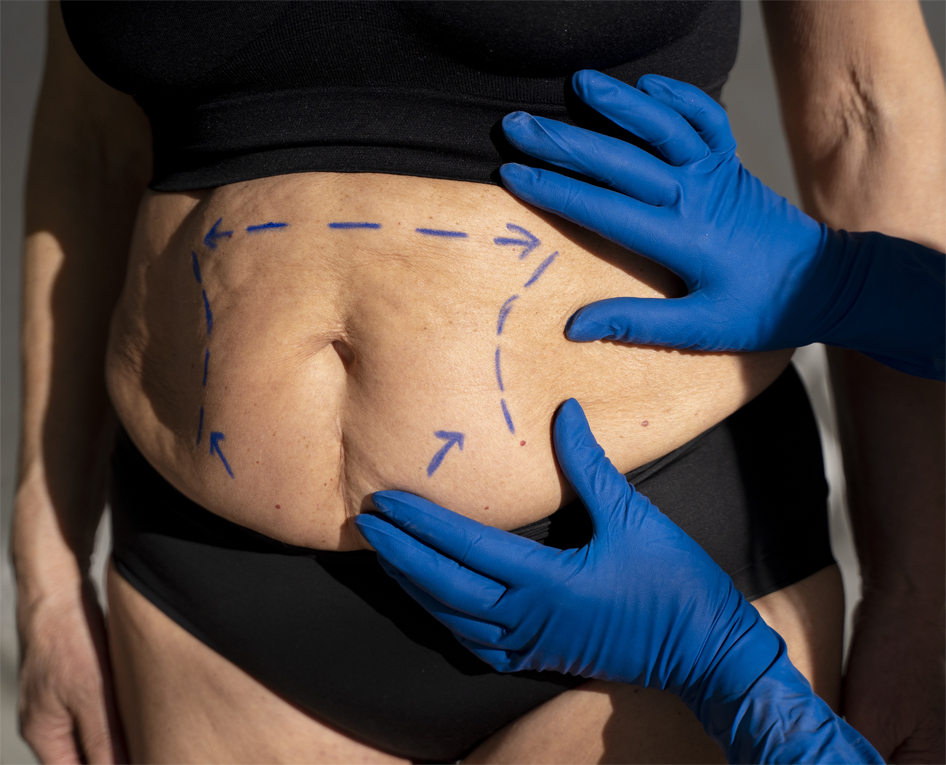Bariatric Surgery


Weight-loss surgery, also known as bariatric surgery, offers a group of life-changing procedures that modify your digestive system, boosting weight loss. Whether your stomach is reduced in size, your small intestine is altered, or hormones and bacteria in your gut are affected, these operations limit calorie and nutrient absorption while enhancing fat breakdown and insulin utilization. Bariatric surgery is the ultimate step in changing your life for the better.

- Those who are considered obese and have not been able to lose excess weight or regain their lost weight despite using methods such as eating plans, exercise, or medications.
- Those with a body mass index (BMI) of 40 or higher, also known as “severe” obesity
- Those with a BMI of 35-39.9, class 2 obesity, with a serious weight-related health problem such as type 2 diabetes, high blood pressure, or severe sleep apnea
- Link to NIH on how to calculate your BMI https://www.nhlbi.nih.gov/health/educational/lose_wt/BMI/bmicalc.htm
Roux-en-Y Gastric Bypass:
This procedure is the most common method of gastric bypass and is typically not reversible. This surgery reduces the size of the upper stomach to a small pouch about the size of an egg which reduces the amount of foods and liquids you can consume. The surgeon staples off the upper section of the stomach then attaches it to a part of the small intestine called the Roux limb, forming a “Y” shape. This causes the food you eat to bypass the rest of the stomach and upper part of the small intestine, reducing the amount of fat, calories, vitamins, and minerals you absorb from the food.
Sleeve Gastrectomy:
This procedure removes about 80% of the stomach, leaving a long, tube-like pouch. The smaller stomach can’t hold as much food and produces less of the appetite-regulating hormone ghrelin which can reduce the desire to eat. The surgery can produce significant weight loss without the rerouting of intestines and requires a shorter hospital stay than other bariatric procedures.
Biliopancreatic Diversion with Duodenal Switch:
This procedure is a two-part surgery. In the first part, the stomach is stapled off to create a small pouch and then the rest is removed. In the second part, the first part of the small intestine (the duodenum) is divided and the end portion of the intestine is attached to the duodenum near the stomach. With these combined, the amount of food and liquids consumed is restricted by the smaller stomach and bypasses a large portion of the small intestine which leads to less digestion and less absorption of nutrients and calories.
This procedure is the most common method of gastric bypass and is typically not reversible. This surgery reduces the size of the upper stomach to a small pouch about the size of an egg which reduces the amount of foods and liquids you can consume. The surgeon staples off the upper section of the stomach then attaches it to a part of the small intestine called the Roux limb, forming a “Y” shape. This causes the food you eat to bypass the rest of the stomach and upper part of the small intestine, reducing the amount of fat, calories, vitamins, and minerals you absorb from the food.
Sleeve Gastrectomy:
This procedure removes about 80% of the stomach, leaving a long, tube-like pouch. The smaller stomach can’t hold as much food and produces less of the appetite-regulating hormone ghrelin which can reduce the desire to eat. The surgery can produce significant weight loss without the rerouting of intestines and requires a shorter hospital stay than other bariatric procedures.
Biliopancreatic Diversion with Duodenal Switch:
This procedure is a two-part surgery. In the first part, the stomach is stapled off to create a small pouch and then the rest is removed. In the second part, the first part of the small intestine (the duodenum) is divided and the end portion of the intestine is attached to the duodenum near the stomach. With these combined, the amount of food and liquids consumed is restricted by the smaller stomach and bypasses a large portion of the small intestine which leads to less digestion and less absorption of nutrients and calories.
- Long-term weight loss
- Can help improve or resolve conditions related to being overweight such as:
- Heart disease
- High blood pressure
- Obstructive sleep apnea
- Type 2 diabetes
- Nonalcoholic fatty liver disease or nonalcoholic steatohepatitis
- Gastroesophageal reflux disease
- Joint pain


